Meet the Experts
Here are the astrophysicists and image-processing experts who want to share their knowledge and love of astrophotography with Challenge participants! You can read their feedback of past submissions on the Standout Entries page.
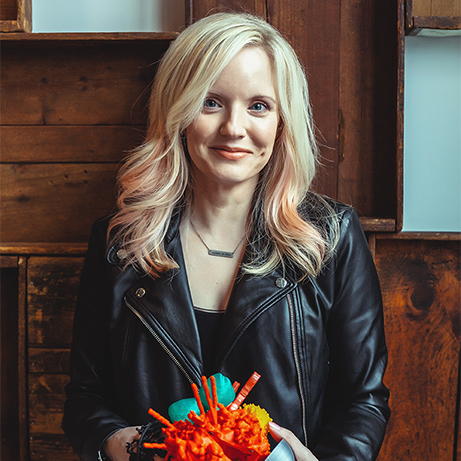
Dr. Kimberly Kowal Arcand
Dr. Kimberly Kowal Arcand is the Visualization Lead for NASA’s Chandra X-ray
Observatory, which has its headquarters at the Smithsonian Astrophysical
Observatory in Cambridge, Massachusetts. Since she always wanted to be an
astronaut when she was little, this work gets Kim close to the cosmos but
without the long distance commute.
Kim is a leading expert in studying the perception and comprehension of
high-energy data visualization across the novice-expert spectrum. As a
science data storyteller she combines her background in molecular biology
and computer science with her current work in the fields of astronomy and
physics.
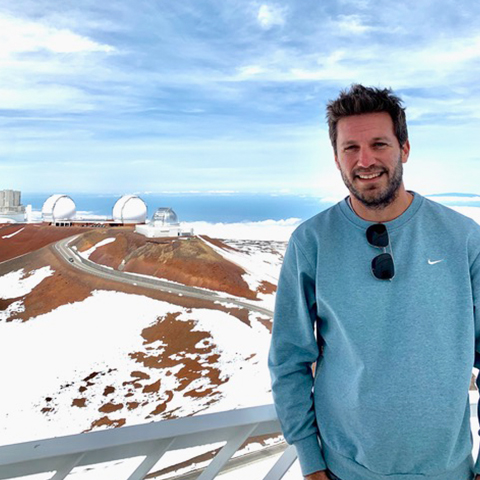
Dr. Murray Brightman
Dr. Murray Brightman is a Staff Scientist at Caltech in the NuSTAR Science Operations Center. He specializes in X-ray astronomy, and is particularly interested in ultraluminous X-ray sources (ULXs) and X-ray transient sources. ULXs are bright sources of X-rays which seemingly shine brighter than they should physically be allowed to. Some of them are known to be powered by neutron stars with powerful magnetic fields, which may help them achieve their extreme luminosities. Some ULXs are transient, meaning they seem to appear suddenly then fade away. Other X-ray transients can be caused by a star being shredded by a black hole known as a tidal disruption event. Murray’s NuSTAR duties include observation planning and data archiving. When Murray is not doing this, he can be found on the tennis court or on a mountain.
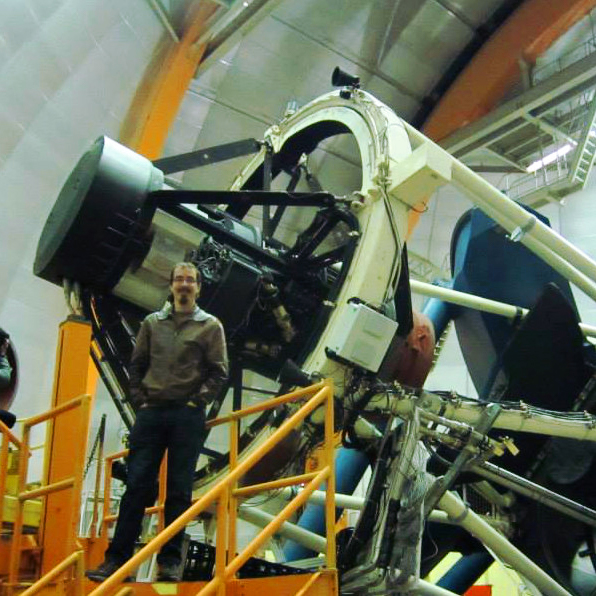
Dr. Christopher Britt
Dr. Christopher Britt used multi-wavelength observations from radio to X-ray wavelengths to find and study new neutron stars and black holes. He got his PhD from Louisiana State University and held post-doctoral research appointments at Texas Tech University and Michigan State University. In 2018, Dr. Britt became an Education and Outreach Scientist for the Space Telescope Science Institute, where he works with the Hubble and James Webb Space Telescopes to share cutting-edge astronomical research with the public.
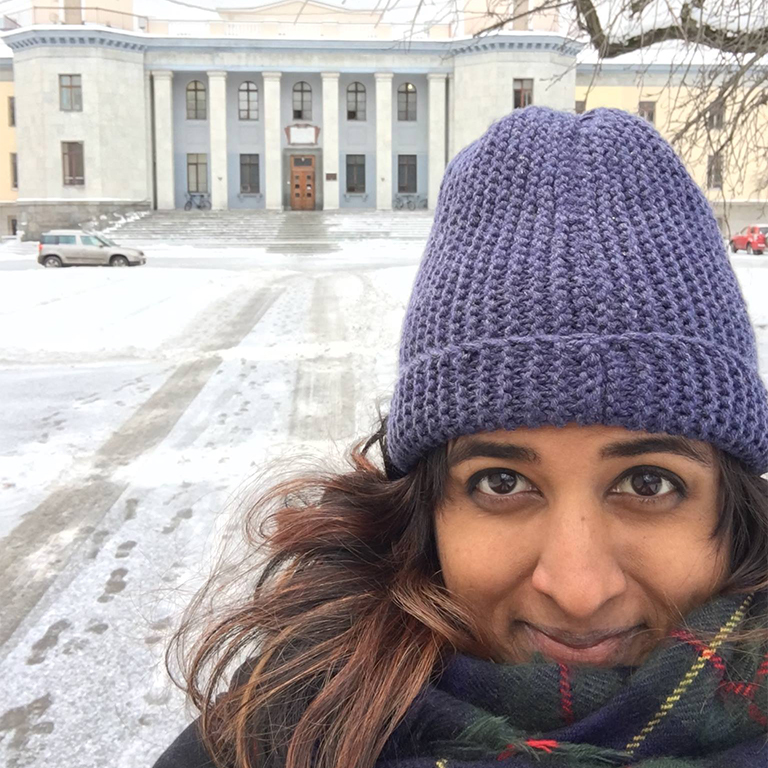
Dr. Urmila Chadayammuri
Dr. Urmila Chadayammuri is a postdoctoral fellow at the Center for
Astrophysics | Harvard & Smithsonian. As a computational cosmologist,
she uses simulations to test how the properties of dark matter can be
inferred from observations of galaxy clusters, which are the largest stable
structures in the Universe. Each cluster contains hundreds to thousands of
galaxies, which can be seen with telescopes such as Hubble; the space
between them is filled with super-hot gas, which emits in the X-ray and
leaves a signature on the Cosmic Microwave Background (CMB) at
sub-millimeter wavelengths.
Further, most galaxies host supermassive black holes, which, when active,
can be seen in the X-ray and/or radio. We want to know many things about any
galaxy cluster, and the information is hidden between these different types
of observations. Simulations help us piece the puzzle together and see the
full picture.
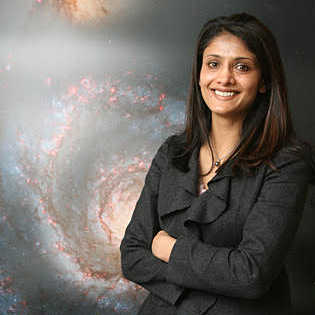
Dr. Rupali Chandar
Dr. Rupali Chandar is a professor of astronomy and Associate Chair in the Department of Physics & Astronomy at the University of Toledo. She received her PhD in astrophysics from Johns Hopkins University in 2000, and went on to postdoctoral positions at Space Telescope Science Insititute (STScI) and Carnegie Observatories in Pasadena. Her research focuses on understanding how stars and clusters of stars form and change over time in nearby galaxies like our own Milky Way. She’s been fortunate enough to work extensively with observations taken with the Hubble Space Telescope, which has given us the clearest view yet of nearby galaxies.
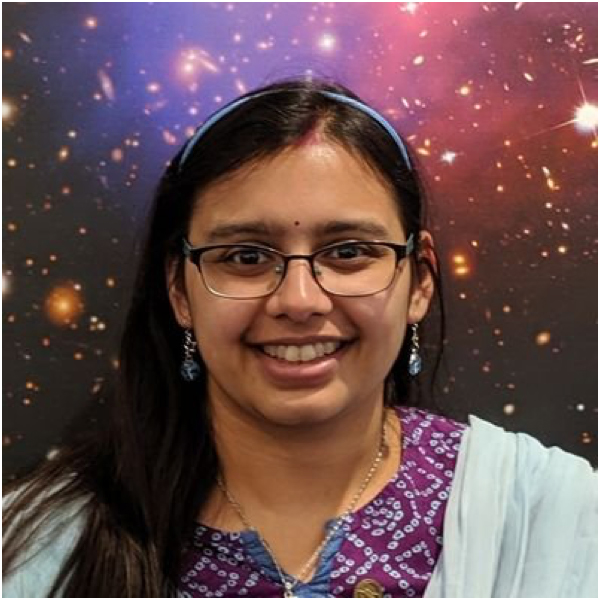
Dr. Rutuparna Das
Dr. Rutuparna Das is an astrophysicist with NASA's Universe of Learning and the Chandra X-ray Center, spending her time both studying the universe and sharing its wonders with the community. For the last several years, Dr. Das has been exploring observations of galaxy clusters in various wavelengths, especially through optical and X-ray light, and is always on the lookout for new ways to showcase the importance and beauty of multiwavelength astrophysics.
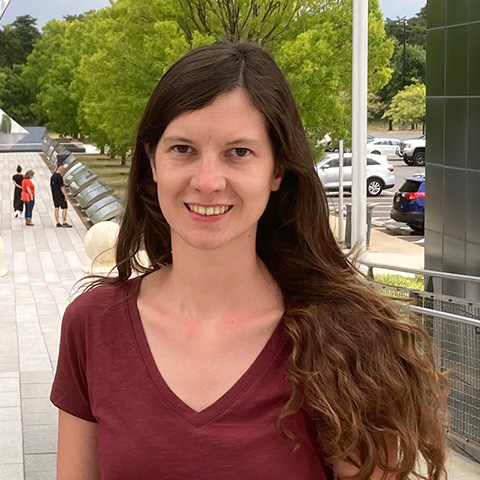
Dr. Marjorie Decleir
Dr. Marjorie Decleir is a postdoctoral researcher at the Space Telescope Science Institute (STScI, Baltimore, MD), where she is studying the properties of the interstellar dust in the Milky Way and nearby galaxies. She is particularly interested in understanding the size and composition of dust grains and how they interact with stellar radiation. For her research, she is using observations from the Hubble, Webb and Swift space telescopes, as well as a range of ground-based observatories. She obtained her PhD in astronomy at Ghent University (Belgium) in 2019. Dr. Decleir’s interest for astronomy was first sparked while attending a few introductory classes at the public observatory of Bruges (Belgium) as a teenager. It is there and then that she fell in love with astronomy and decided to become a professional astronomer to investigate the wonders of the Universe. She therefore strongly believes that public outreach can change someone’s future forever!
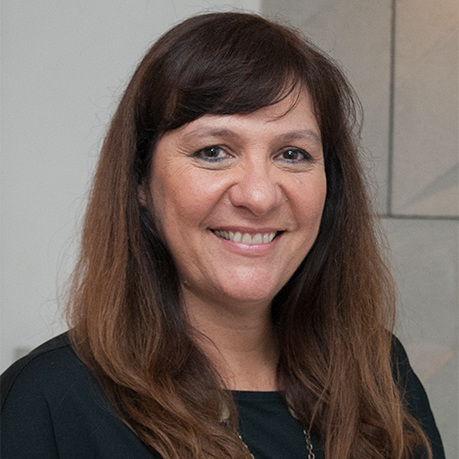
Dr. Duilia de Mello
Dr. Duilia de Mello is a Professor in Physics at Catholic University of America. She obtained her PhD from the University of Sao Paulo, Brazil. Her area of expertise is Extragalactic Astronomy and she works with Hubble Space Telescope and giant telescopes like Gemini to study galaxy evolution. As part of the Hubble UV UDF and CANDELS teams she uses Hubble to investigate how disks are assembled. She studies colliding galaxies and their impact in the intergalactic medium. Her latest discoveries include dozens of blue blobs outside colliding galaxies. Dr. de Mello is deeply committed to communicating and popularizing science and to inspiring young women to consider careers in STEM fields.

Joe DePasquale
Joe DePasquale is the Senior Science Visuals Developer in the Office of
Public Outreach at the Space Telescope Science Institute. Prior to joining
STScI in March of 2017, Joe was the Science Imager for NASA’s Chandra X-ray
Observatory at the Smithsonian Astrophysical Observatory where he worked for
16 years following his undergraduate training in Astronomy &
Astrophysics at Villanova University.
Joe has an extensive background in astronomy, as well as training in art and
photography, giving him a unique skill set well-suited to the task of
bringing raw observatory data to life in press quality imagery.
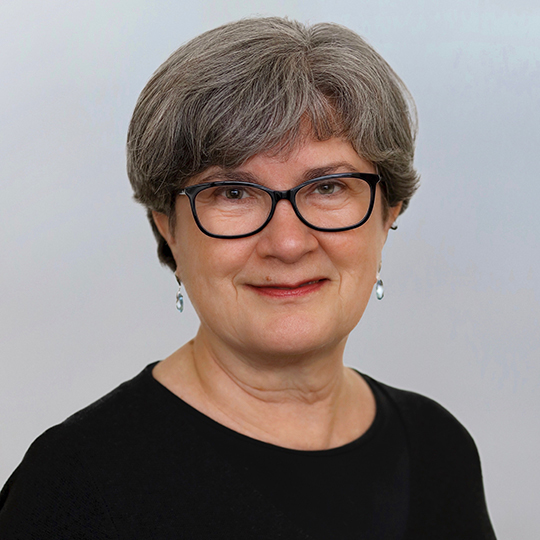
Dr. Giuseppina Fabbiano
Dr. Giuseppina Fabbiano is a Senior Astrophysicist at the Smithsonian
Astrophysical Observatory (SAO), a member of the Center for Astrophysics |
Harvard & Smithsonian. After completing her studies in Physics at the
University of Palermo (Italy), Dr. Fabbiano joined the group that became the
major center for X-ray Astronomy worldwide. She was a scientist in the data
management teams of the NASA UHURU mission, the first X-ray astronomy
satellite, and the HEAO-1/A3 mission.
Today, Dr. Fabbiano is the Head of the Chandra X-ray Center Data Systems
Division. She is a leader in the observational studies of populations of
X-ray sources in galaxies, the hot interstellar medium, and the interaction
between nuclear massive black holes and the host galaxy.
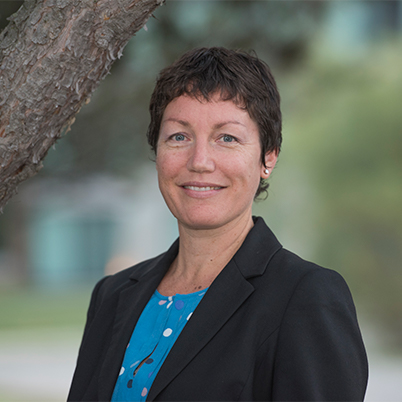
Dr. Daryl Haggard
Dr. Daryl Haggard is an Assistant Professor of Physics at McGill University
in the McGill Space Institute. She and her team study the Galactic center
and Sgr A*, electromagnetic counterparts to gravitational wave sources,
accreting compact objects, supermassive black holes and their host galaxies,
and multi-wavelength and time domain surveys.
Dr. Haggard has been working with the Chandra X-ray Observatory since the
beginning of her research career and looks forward to many more years of
discovery with this fantastic NASA space telescope!
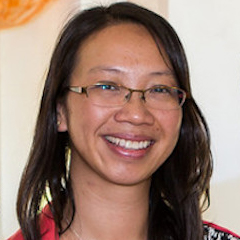
Dr. Quyen Hart
Dr. Quyen Hart is an Education and Outreach Scientist in the Office of
Public Outreach at the Space Telescope Science Institute (STScI), where she
works on various aspects of NASA’s Universe of Learning and other
educational projects related to the HST, JWST, and WFIRST missions. She
earned her Ph.D. from the University of Colorado Boulder, where she studied
active super-massive black holes in clusters of galaxies. Prior to joining
STScI in August 2019, she was an associate professor of physics and
astronomy at Regis University, where she taught and mentored students in all
different areas of science and technology.
Dr. Hart has been very active in providing unique learning experiences for
the public, including running summer STEM camps for underserved and
under-represented middle school girls, hosting large public STEM events for
over 600 people, and other astronomy-related public observing nights. She is
passionate about sharing the wonders of astronomy and science to the general
public because she knows that everyone can be a scientist!
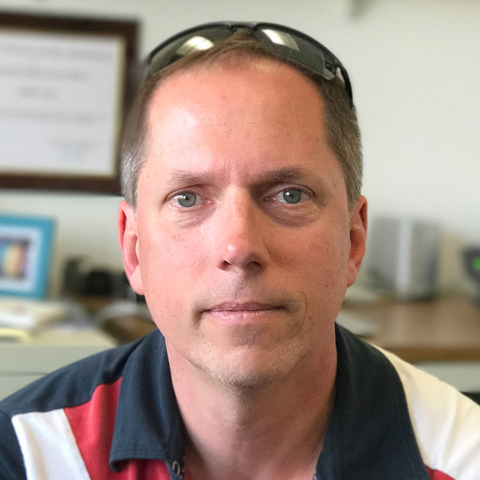
Dr. Robert Hurt
Dr. Robert Hurt is an astronomer and “AstroVizicist” at Caltech/IPAC with a
research background in star formation and galaxies. He specializes in data
visualization and the development of illustrations and video to communicate
science. He has been the imaging lead for for a variety of NASA missions
spanning the spectrum of light including the Spitzer Space Telescope, WISE,
GALEX, and NuSTAR.
Dr. Hurt also produces science-based illustrations and artwork; his work has
recently appeared on the cover of Nature, and his illustrations of
exoplanets, black holes, and the Milky Way are widely used by the news and
video media.
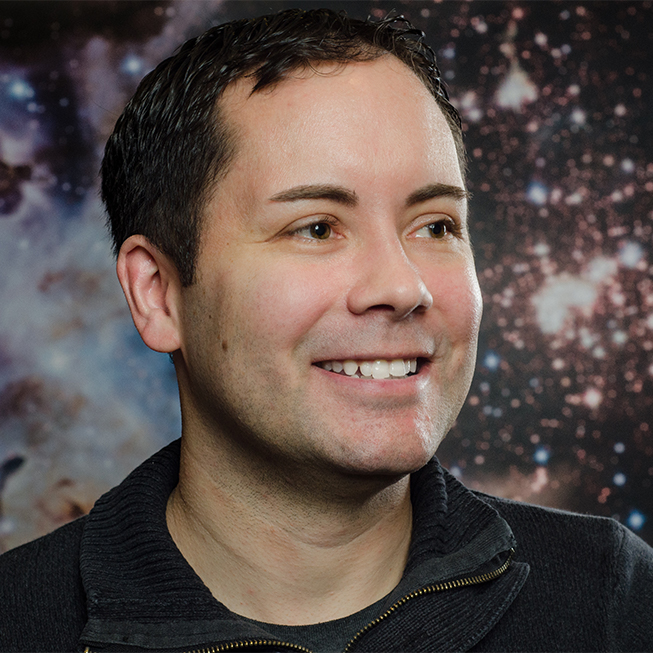
Dr. Brandon Lawton
Dr. Brandon Lawton is an astronomer in the Office of Public Outreach at the
Space Telescope Science Institute (STScI). He got his PhD in astronomy at
New Mexico State University in 2008, studying mysterious dust signatures in
other galaxies. This was followed by a postdoctoral position at STScI where
he used Spitzer Space Telescope data to explore star formation in our
neighboring galaxies, the Magellanic Clouds.
Dr. Lawton has been a member of the Office of Public Outreach since 2011
where he works with the Hubble, JWST, and WFIRST outreach and communications
teams, as well as with the broader NASA science education community, to
deliver accurate cutting-edge science content to students, educators, and
the general public.
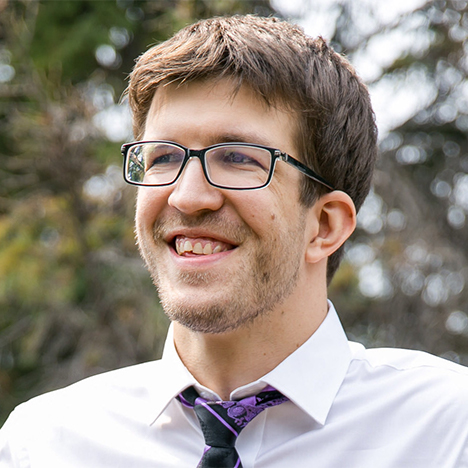
Dr. Joel Leja
Dr. Joel Leja is a National Science Foundation postdoctoral fellow at the Center for Astrophysics | Harvard & Smithsonian, where his work focuses on interpreting observations of galaxy assembly. He obtained his Ph.D. from Yale University in 2016 where he studied how to trace galaxies through cosmic time. Currently he is analyzing space-based imaging surveys of galaxies in the high-redshift universe to directly assess when and where galaxies assembled their stars.
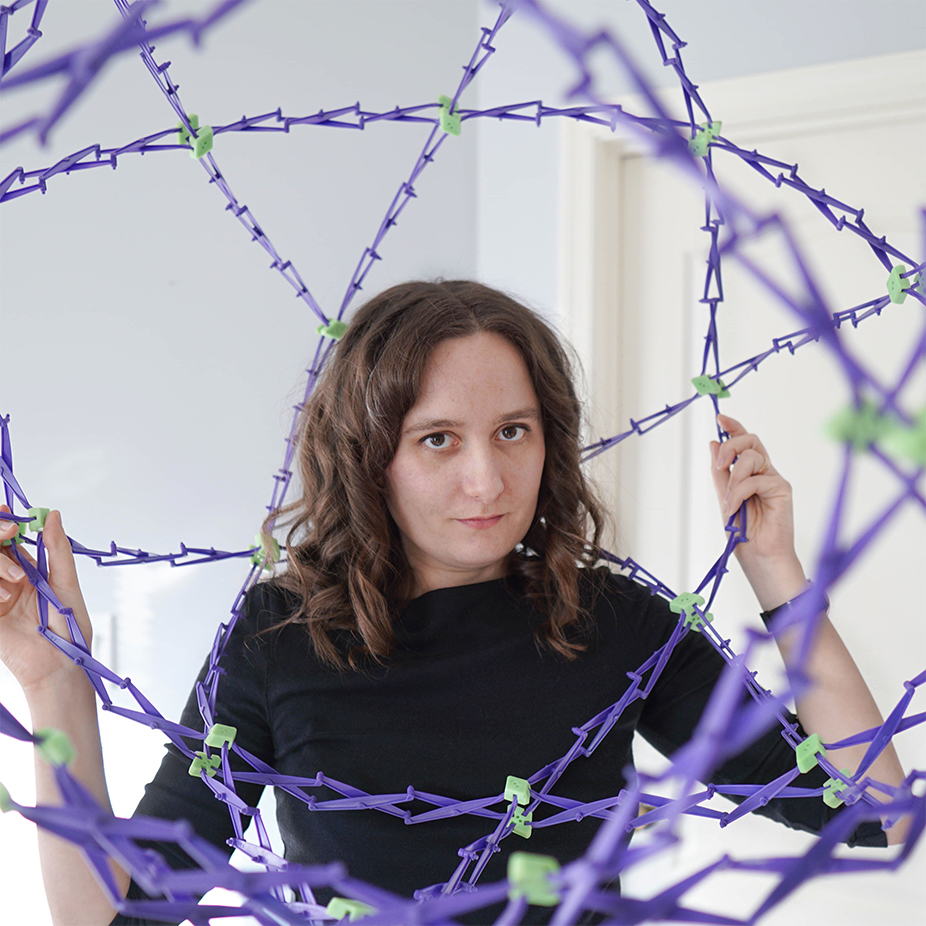
Dr. Kelly Lepo
Dr. Kelly Lepo is an Education and Outreach Scientist at the Space Telescope Science Institute, where she primarily works to support outreach efforts for the upcoming James Webb Space Telescope. She received a PhD in Astronomy and Astrophysics from the University of Toronto. During her time in Canada, she made numerous local and national media appearances to talk about everything from the 2012 Mayan Apocalypse to the Super Blue Blood Moon. She has also served as the Coordinator of the McGill Space Institute, taught physics at Gonzaga University, and helped build the Large Hadron Collider at CERN.
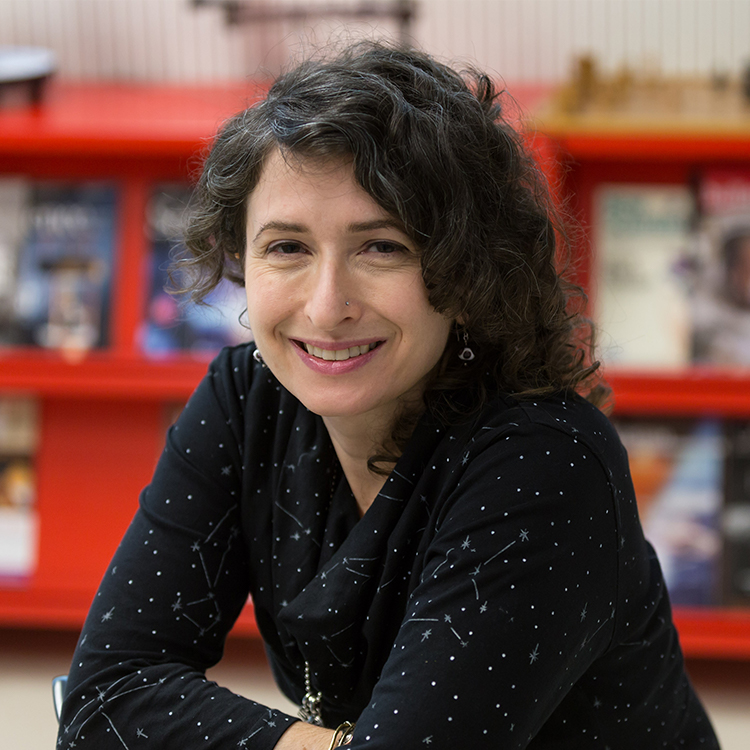
Dr. Sera Markoff
Dr. Sera Markoff is a Professor of Astrophysics at the University of Amsterdam and is currently Event Horizon Telescop Science Council Vice Chair. She is interested in a variety of problems relating to the accretion process, especially around black holes, both big and small. She leads the “jetsetters” research group, focusing on black holes of all sizes, especially their jets. When not physics-ing, she obsesses over music, cats and food.
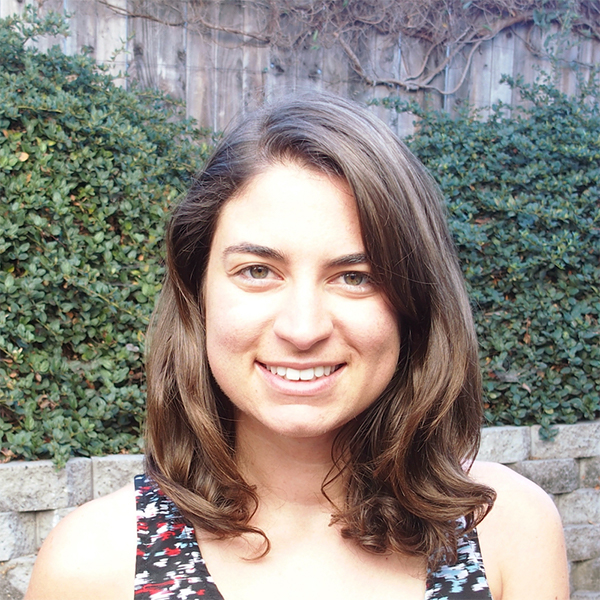
Dr. Charlotte Mason
Dr. Charlotte Mason is NASA Hubble Fellow at the Center for Astrophysics | Harvard & Smithsonian. Charlotte’s research focuses on the evolution of galaxies in the early universe and the impact they have on their surroundings. We observe these distant galaxies in optical and infra-red wavelengths as most of their starlight, originally emitted in the ultra-violet, is very redshifted by the time it reaches Earth. Charlotte has used Hubble to study these galaxies and is excited to be an early user of the upcoming James Webb Space Telescope, which will expand our cosmic horizons by obtaining the deepest images of galaxies in the distant universe.
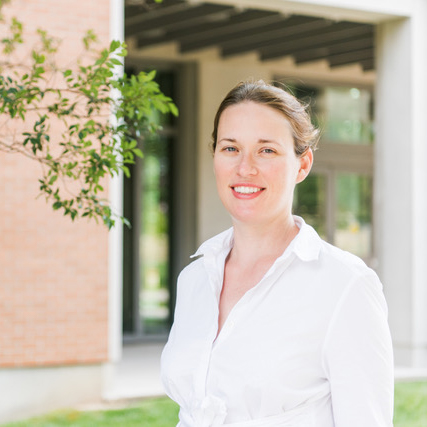
Dr. Eileen Meyer
Dr. Eileen Meyer is an associate professor of Physics at the University of
Maryland, Baltimore County (UMBC). She received her PhD from Rice University
before going on to post-doctoral work at the Space Telescope Science
Institute. where she led a study of the motions of extremely fast-moving
plasma emanating from the super-massive black hole in the nearby galaxy M87
using Hubble.
Dr. Meyer is interested in the high-energy activity associated with
super-massive black holes and understanding the light they produce, which
ranges from the lowest energies (radio wavelength) to the highest
(gamma-rays). She and her team of graduate and undergraduate researchers at
UMBC use new and archival data from the Hubble Space Telescope, Chandra
X-ray Observatory, Fermi gamma-ray observatory, and many other facilities to
better understand how black holes influence their environments.
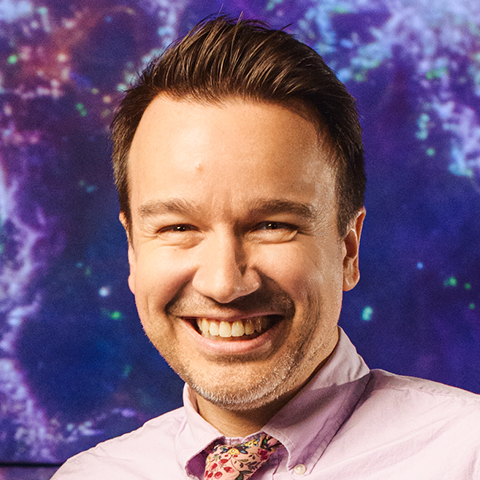
Dr. Danny Milisavljevic
Dr. Danny Milisavljevic is an Associate Professor of Physics and Astronomy
at Purdue University. He received his MSc in the Philosophy and History of
Science from the London School of Economics, and his PhD in Physics and
Astronomy from Dartmouth College. Before becoming a Boilermaker,
Milisavljevic held postdoctoral fellowship positions at Harvard University
and the Smithsonian Astrophysical Observatory.
Milisavljevic uses multi-wavelength observations to understand the many
types of cosmic explosions that make up the dynamic universe. Specific
research interests include the explosion mechanisms, progenitor stars, and
compact object remnants of supernovae; as well as the formation/destruction
of dust and molecules that provide the building blocks of life in the
universe. Most recently, Milisavljevic is the Principal Investigator of a
James Webb Space Telescope survey of the beautiful supernova remnant
Cassiopeia A.
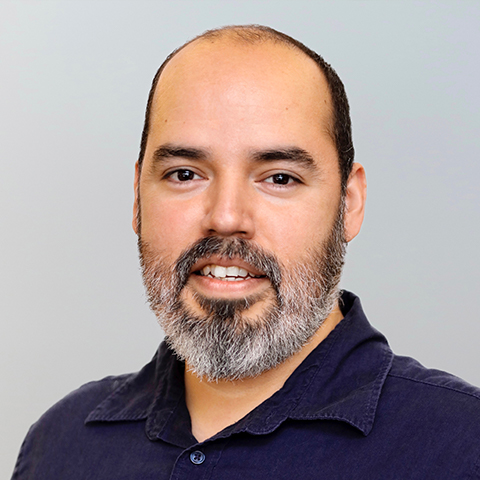
Dr. Rudy Montez
Dr. Rodolfo "Rudy" Montez Jr. is an Astrophysicist at the Center for
Astrophysics | Harvard & Smithsonian. He was previously a Postdoctoral
Fellow at Vanderbilt and Fisk Universities as a researcher and mentor for
students in the Fisk-Vanderbilt Masters to PhD Bridge Program. Dr. Montez's
PhD from the Rochester Institute of Technology was awarded an inaugural
Rodger Doxsey Travel Prize for outstanding PhDs by the American Astronomical
Society.
Dr. Montez's research focuses on understanding the end states of sun-like
stars using multiwavelength observations from space-based telescopes like
the Chandra X-ray Observatory and Hubble Space Telescope. He serves in the
Chandra Director's Office performing executive functions that support the
Chandra mission and its user base of astronomers across the globe.
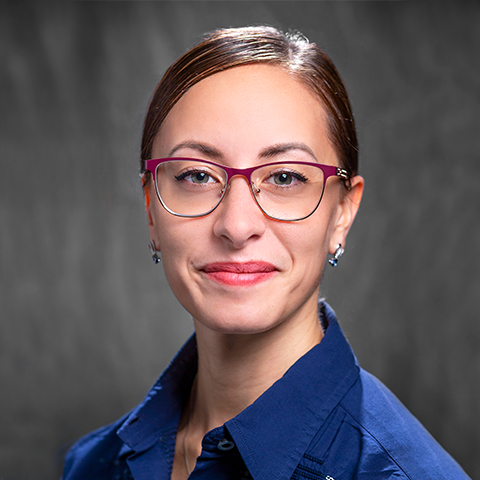
Dr. Michela Negro
Michela Negro received her Ph.D. in 2019 in Physics and Astrophysics at the University of Torino, in Italy. She spent 4 years at NASA Goddard Space Flight Center for a postdoc first and then assistant researcher studying high energy astronomy. She is currently assistant professor at Louisiana State University and her research focuses on high-energy and multimessenger astrophysics as well as on future missions’ development.
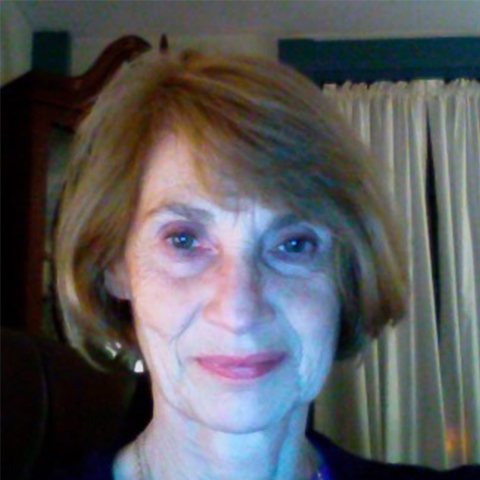
Dr. Joy Nichols
Dr. Joy Nichols is an Astrophysicist and a Research Associate at the
Smithsonian Astrophysical Observatory (SAO), a member of the Center for
Astrophysics | Harvard & Smithsonian. Dr Nichols completed her PhD
degree at the University of Amsterdam. Since that time she has served as a
member of the Data Processing teams at the IUE Observatory, Space Telescope
Science Institute, Spitzer Science Center, and Chandra X-ray
Center.
Dr. Nichols currently devotes her research to the study of hot, massive
stars. Using the Chandra X-ray Observatory and the NICER instrument on ISS,
she investigates the structure and dynamics of stellar winds, with the goal
of better understanding the evolution and energy budget of our home galaxy.
Dr. Nichols is a leader in the analysis of stellar wind topic as well as
interstellar medium topics, with active collaborations worldwide.

Dr. Alberto Noriega-Crespo
Dr. Alberto Noriega-Crespo is a "Scientist" at the Space Telescope Science Institute working with the Mid-Infrared Instrument (MIRI) on board of the James Webb Space Telescope. He has been involved in several projects using infrared wavelengrhs, including the star formation in the Milky Way, the dust properties of the Interstellar Medium, bow shocks around runnaway stars, the properties of Photo-dissociation regions and the physics of Young Stellar Objects and their supersonic jets.

Dr. Salvatore Orlando
Dr. Salvatore Orlando is a Senior Scientist at the National Institute for Astrophysics (INAF) - Astronomical Observatory of Palermo (Italy). He earned his PhD in physics from the University of Palermo, with a portion of his studies conducted at the Department of Astronomy and Astrophysics at the University of Chicago. Prior to his current position, he served as a research fellow for two years at the European Space Agency (ESA) in The Netherlands. His research focuses on various aspects of astrophysics, ranging from the physics of accretion processes in young stellar objects to the evolution of nova outbursts and the dynamics of supernovae and their remnants. Particularly, he is deeply intrigued by the intricate connections between progenitor stars, supernovae, and supernova remnants, as well as the complex interaction of these remnants with their surrounding environment, and the mechanisms of particle acceleration in astrophysical shocks. To delve into these phenomena, he develops sophisticated multidimensional magnetohydrodynamic models, which accurately describe the evolution of the astrophysical systems under investigation, and compares their outcomes with multi-wavelengths observations.
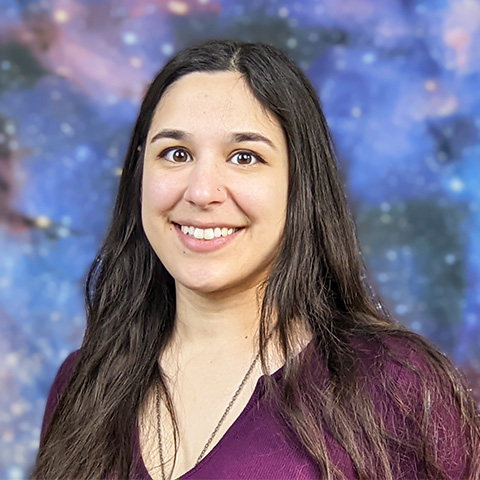
Alyssa Pagan
Alyssa Pagan is a Science Visuals Developer in the Office of Public Outreach at the Space Telescope Science. She obtained a bachelor’s degree in Art and Design from Towson university and a second bachelor’s in Astronomy from the University of Maryland, College Park. Leveraging Art and Science, Alyssa produces color images of space that are both scientifically informed and aesthetically compelling in effort to make the Universe and our understanding of it more accessible, inspiring and engaging.
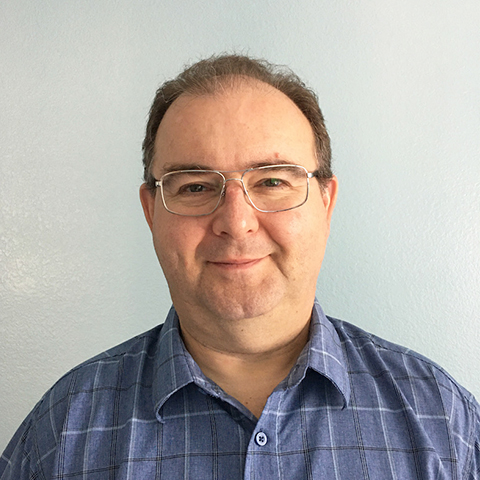
Paul Scowen
Paul Scowen now serves as a Senior Research Astrophysicist at the NASA Goddard Space Flight Center in Code 667, the Exoplanets and Stellar Astrophysics Lab. He also currently serves as the Acting Lab Chief for Code 667. Scowen is a UV astrophysicist and is particular interested in the study of massive stars and their influence on the star and planet formation process, and the overall evolution of galaxies as they drive the processing of matter and energy through the Baryonic life cycle. Scowen currently leads a team designing an Explorer-class mission named Polstar to use UV spectropolarimetry to study the impact of rotation and mass loss on the evolution of real-world massive stars as compared to models of the same. Scowen also served as the Instrument Lead Scientist on the recently completed large mission concept study for HabEx and is now working with others to prepare and define the next NASA Flagship, the Habitable Worlds Observatory, based on work completed by that and other studies. Scowen serves as the Payload Engineer for the UV cubesat SPARCS, led by PI Prof. Evgenya Shkolnik at Arizona State University, where he served as a Research Professor for 30 years before moving to NASA. Scowen’s claim to fame is that he was a member of the original team that observed and produced the well-known “Pillars of Creation” images with the Hubble Space Telescope and the WFPC-2 camera.
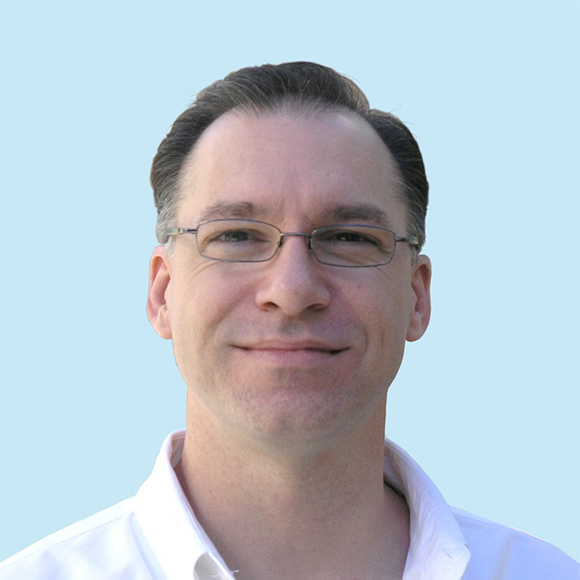
Dr. Mark Seibert
Dr. Mark Seibert is an astrophysicist with the Observatories of the Carnegie Institution for Science where he uses ground- and space-based telescopes to study the evolution of stars, gas, and dust in galaxies. He then applies this to derive the distances to galaxies in order to measure the expansion rate of the universe to high precision. Dr. Seibert was a member of the Space Operations and Data Analysis team for NASA's Galaxy Evolution Explorer (GALEX) ultraviolet space telescope.
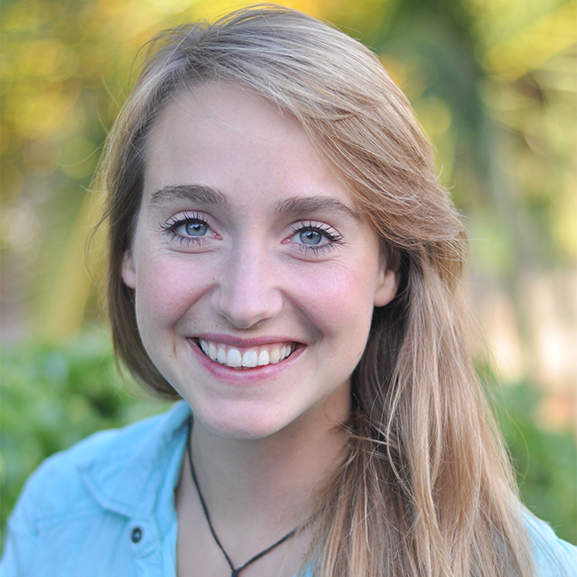
Dr. Marja Seidel
Dr. Marja Seidel is a staff scientist at IPAC/Caltech in Pasadena,
California. IPAC is a Science Center for Astrophysics partnering with NASA,
NSF, JPL and the worldwide research community to advance the exploration of
our Universe. Dr. Seidel divides her time between research and outreach. In
her research role, she combines observations and numerical simulations to
better understand the formation of galaxy disks and the influence of dark
matter. In her outreach role, she develops resources for NASA's Universe of
Learning.
Apart from being a researcher and science communicator in her job, Marja has
also been leading worldwide outreach events and expeditions with Cielo y
Tierra and Galileo Mobile.
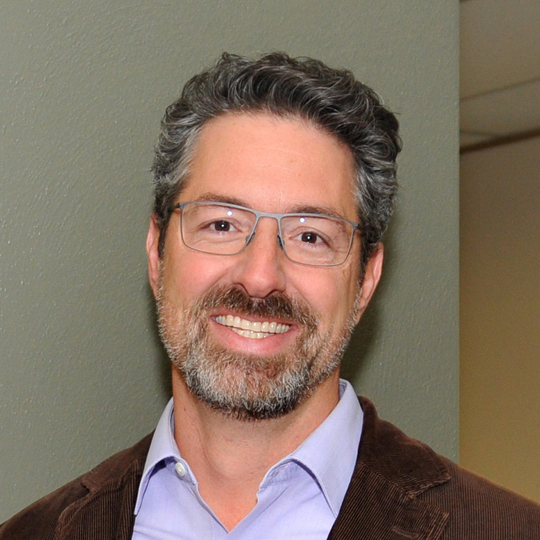
Dr. J.D. Smith
Dr. J.D. Smith is a Professor of Astronomy & Astrophysics at the University of Toledo. He received his PhD in astronomy at Cornell University in 2001, where he helped develop one of the three instruments to fly aboard the Spitzer Space Telescope. After graduate school, Prof. Smith completed postdoctoral work at the University of Arizona, then joined the research faculty at Steward Observatory, before moving to Ohio in 2008. His research focuses on the physical conditions of interstellar material as a tool for understanding galaxy evolution.
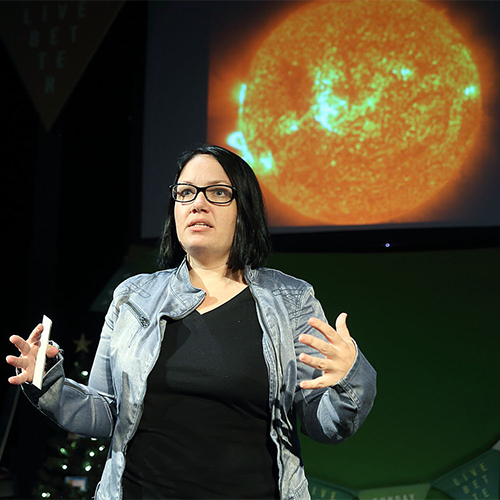
Dr. Sabrina Stierwalt
Dr. Sabrina Stierwalt is an extragalactic astrophysicist and a Professor of
Physics at Occidental College in the heart of Los Angeles. She researches
nearby merging galaxies to understand the physics of what happens when
galaxies collide, including how stars and galaxies formed throughout the
universe's history.
Dr. Stierwalt works to make science and the stars more accessible through
her weekly science podcast Everyday Einstein and through a program to bring
an inflatable planetarium to communities across Los Angeles that are
under-represented in STEM. She also teaches fun classes like Quantum
Mechanics and Advanced Electricity & Magnetism.
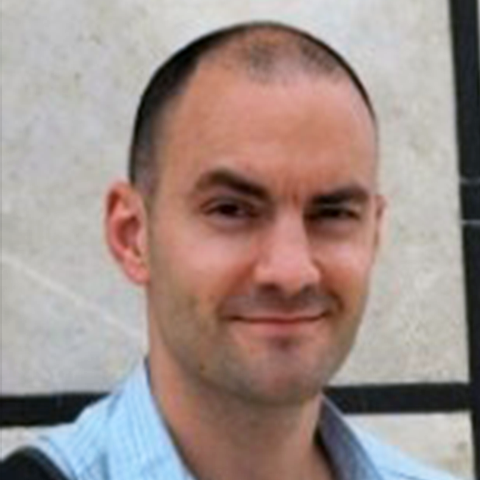
Dr. Nathan Smith
Dr. Nathan Smith is a Professor of Astronomy at the University of Arizona
& Staff Astronomer at Steward Observatory. He is interested in
understanding the evolution and fate of massive stars, and their influence
on the surrounding interstellar medium, such as how stars and planets form
in the surrounding debris cloud. His primary focus is on the violent
explosions and eruptions that occur as a massive star approaches its death,
especially those of the most massive and luminous stars known.
He uses multiwavelength spectroscopic observations and high-resolution
imaging of supernovae to study these extreme explosions observed in real
time. Dr. Smith conducts observations using the Hubble & Chandra Space
Telescopes and other NASA missions, plus numerous ground-based
optical/infrared telescopes. In addition to his astrophysics studies, Nathan
also has a degree in music.
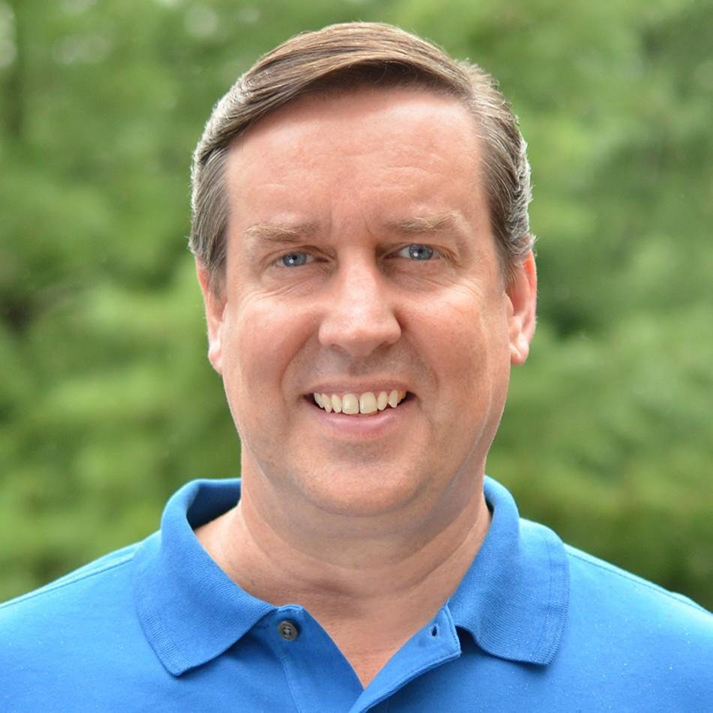
Dr. Frank Summers
Dr. Frank Summers is an outreach astrophysicist at the Space Telescope
Science Institute in Baltimore. For almost two decades, he has contributed
to all aspects of the Hubble and James Webb Space Telescope press,
education, and outreach through news media, websites, educational programs,
social media, museums and planetariums.
His specialty is as an 'astrovizicist,' creating accurate and aesthetic
scientific visualizations by combining research computer simulations and
Hollywood rendering techniques. His credits include writer, science advisor,
and scientific visualization supervisor on the IMAX film Hubble 3D,
and a science and script advisor on the IMAX film A Beautiful
Planet. He contributed data, science, and visuals to the Academy
Award-nominated IMAX film Cosmic Voyage, and directed the IMAX
short film Hubble: Galaxies Across Space and Time, winner of the
LFCA Best Short Film award (2004)."
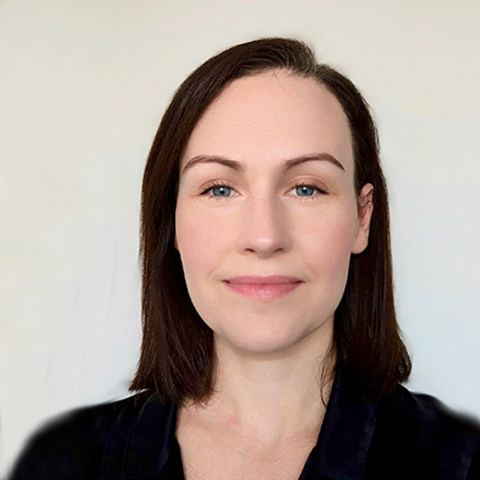
Dr. Tea Temim
Dr. Tea Temim is a research astronomer at Princeton University. Her research focuses on understanding how supernova explosions of massive stars affect their environment and enrich the interstellar medium. She is particularly interested in the evolution of supernova remnants and pulsar winds, and the connection between stellar progenitors/explosions and their observed remnants.
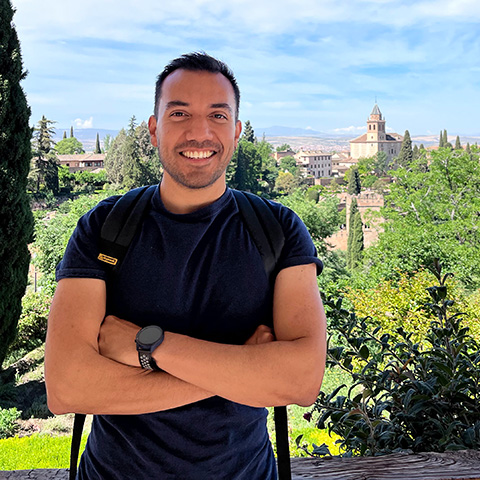
Dr. Jesús Toalá
Dr. Jesús Toalá is a researcher at the Institute of Radio Astronomy and
Astrophysics (IRyA) of the National Autonomous University of Mexico (UNAM).
Before that, he worked as a "Distinguished Postdoc Fellow" at the Institute
of Astronomy and Astrophysics of Academia Sinica (ASIAA) in Taiwan and a
postdoc at the Instituto de Astrofísica de Andalucía in Granada,
Spain.
Dr. Toalá uses multi-wavelength observations from ground-based and satellite
facilities such as Chandra, XMM-Newton and Hubble Space Telescope to study
the violent impact that hot evolved stars imprint into their circumstellar
medium. He is currently the head of the Evolved Stars group at IRyA working
with postgraduate students and postdocs
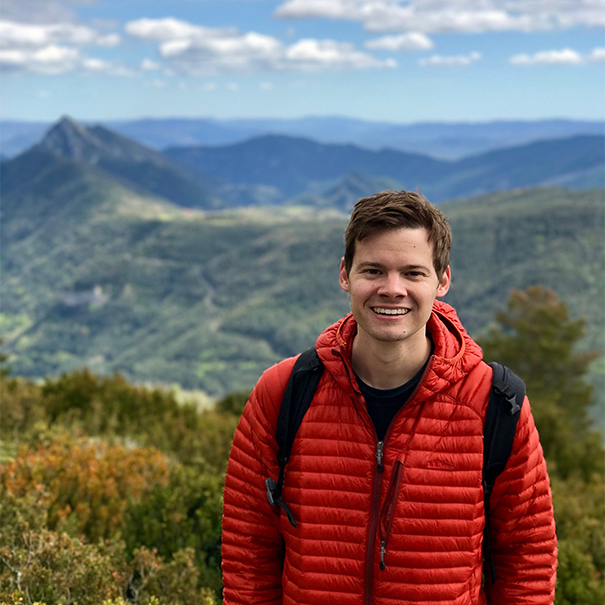
Dr. Grant Tremblay
Dr. Grant Tremblay is an Astrophysicist at the Center for Astrophysics |
Harvard & Smithsonian. He was previously a NASA Einstein Fellow at Yale
University, a Fellow at the European Southern Observatory (ESO), and an
Astronomer at ESO's Very Large Telescope in Chile.
Dr. Tremblay's research employs highly multiwavelength techniques, using
data from the world's most powerful ground- and space-based observatories to
better understand star formation amid energetic feedback from supermassive
black holes. He currently serves as the head of the Lynx X-ray Observatory
Science Support Office at the Smithsonian Astrophysical Observatory, and
supports Flight Operations for the Chandra X-ray Observatory as part of the
High Resolution Camera Instrument Principal Investigator Team.
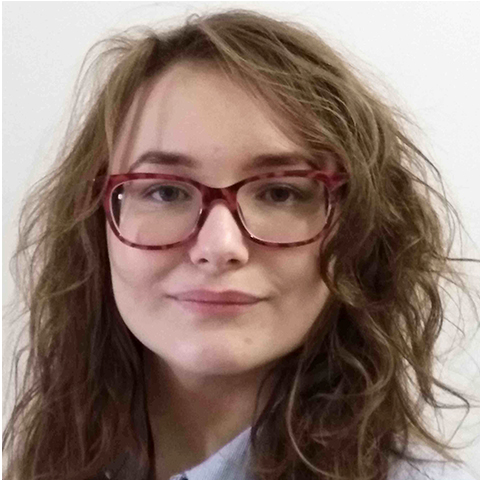
Dr. Elizabeth Watkins
Dr. Elizabeth Watkins originally received her PhD in Astronomy at Cardiff University studying the impact of stellar feedback on individual star forming molecular clouds in the Milky Way. She continued studying stellar feedback during her first, and current postdoctoral position at Heidelberg University, but while there she moved onto studying feedback at much larger scales in nearby galaxies (such as in the Phantom galaxy). For this work, she focused on identifying and observing superbubbles -- large expanding regions of hot gas -- in cold gas tracers using ALMA and JWST, and by identifying the stellar populations within the superbubbles using HST. For her work, she has used observations spanning a large range of wavelengths, from the optical to radio, allowing her to trace the high and low energy processes that govern star formation, molecular clouds and feedback.
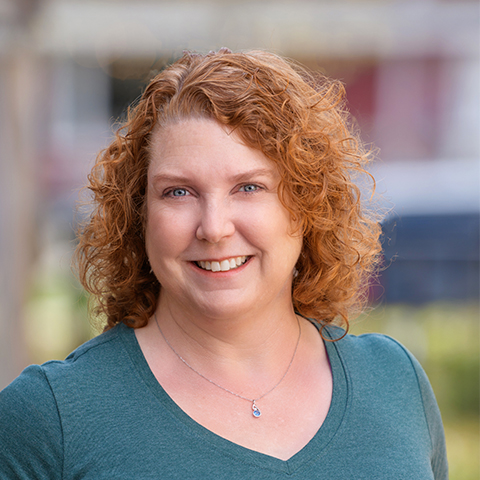
Nancy Wolk
Nancy Wolk is the Chandra X-ray Observatory Imaging Scientist. She's been part of the Chandra X-ray Center for over 20 years, working on teams from software to spacecraft support, and now creates scientifically accurate images for the public. Her favorite topic of study is star formation and young stellar objects. She's constantly learning new ways to share the universe with the non-astronomical public.
When does the next season start?
The season starts on .
Follow our Twitter or Facebook pages to get updates whenever standout entries are posted.
What about past seasons?
You can still work with NASA data from past Challenges! Head to the Challenges Archive of JS9-4L, where you will find NASA image files among the Archived Images for all of the past seasons.
Want to see what others have done with image data? Check out highlighted entries from past Challenges on the Standout Entries page.


